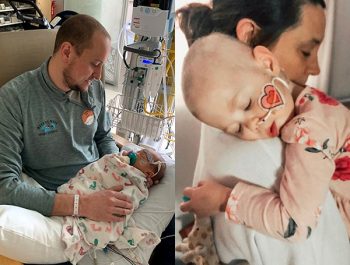
Who are your heroes? Are they exceptionally talented? Do they have superhuman abilities? Are they destined for greatness?
Or, are they ordinary people who face tremendous challenges and persevere out of love?
Kyle and Samantha Hatch undoubtedly fall in the latter category. In the past year, one of their twin sons was born with a life-threatening heart defect. Three months later, their 18-month-old daughter was diagnosed with neuroblastoma. And all of this happened during a global pandemic.
“We often talk about literary heroes, people who face adversity even when they’re unprepared,” Kyle Hatch said. “That’s what makes them brave, and that’s why our kids are some of the bravest people we know.”
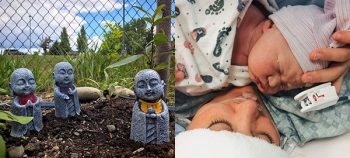
Long before Samantha and Kyle Hatch had two children with life-threatening illnesses, the couple dreamed of having a big family. Unfortunately, the process was more challenging than they expected. Samantha Hatch’s first pregnancy ended in a miscarriage. After that, she gave birth to their son, Ben, now 6. The next year they had two more miscarriages and decided to get help from a fertility clinic.
“I had a depleted number of eggs left, so growing our family through IVF was the only option,” Samantha Hatch said. “Thankfully, we were blessed with our daughter, Penelope, in 2018.”
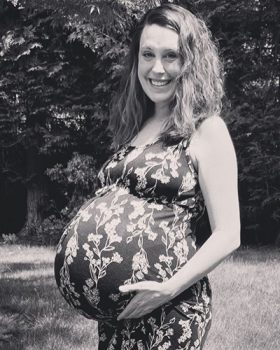 The next year, Samantha Hatch became pregnant with identical twins when one of their IVF embryos split.
The next year, Samantha Hatch became pregnant with identical twins when one of their IVF embryos split.
“We thought we hit the jackpot!” Samantha Hatch said.
Then, during an ultrasound in December 2019, doctors discovered one of the twins, William, had hypoplastic left heart syndrome (HLHS), a severe congenital heart defect in which the left side of the heart is underdeveloped. Essentially, he had half a heart trying to do the work of a whole one.
“We had been so excited about having twins and then all of that was ripped away,” Samantha Hatch remembers.
The Hatches were referred to Seattle Children’s Prenatal Diagnosis and Treatment Clinic, where they learned more about William’s diagnosis.
To survive HLHS, infants must undergo open-heart surgery shortly after birth, followed by at least two more heart surgeries over the next few years. Even then, the surgeries are considered palliative; babies like William only have a 50% to 60% chance of surviving to age 5.
“Our first reaction was fear,” Kyle Hatch said. “We didn’t think we could do it. We thought it would be too hard. We didn’t think he would survive.”
Dr. Bhawna Arya, director of Fetal Cardiology at Children’s, guided the family through their options.
“She really listened to us as we were deciding what to do,” Samantha Hatch said. “One of the hardest things for me was discussing hospice care. It was such an intense conversation, but she didn’t speak to us like she was a doctor and we were her patients. We were all just people in that moment.”
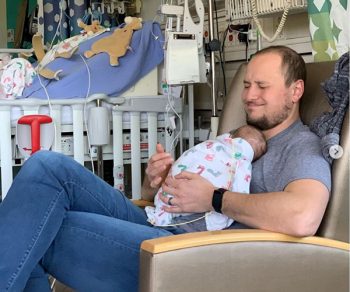
Kyle and Samantha Hatch were given options to terminate the pregnancy or provide comfort care for William after his birth, but they were determined to give their son a chance to live, so they decided to proceed with surgery.
William and Theodore Hatch were born, full term, on May 12, 2020 at Evergreen Medical Center in Kirkland, WA. William came out first. Samantha Hatch saw him for just a few seconds before he was taken to Evergreen’s neonatal intensive care unit (NICU). When Seattle Children’s transport team arrived to take William, Kyle Hatch went with them.
Samantha Hatch remained at Evergreen for two days as she recovered from her C-section. During that time, Kyle Hatch traveled back and forth between the two hospitals, checking on Samantha and Theodore and bringing tiny bottles of breastmilk to William in Children’s Cardiac Intensive Care Unit (CICU).
“Kyle was the backbone of our family,” Samantha Hatch said. “We’d be lost without him. He loves his children and our family more than anything, and he held me together when all I wanted to do was fall apart.”
Samantha remembers the moment she finally got to Children’s and laid Theodore next to his twin brother. “They loved being together, touching each other and giving kisses.”
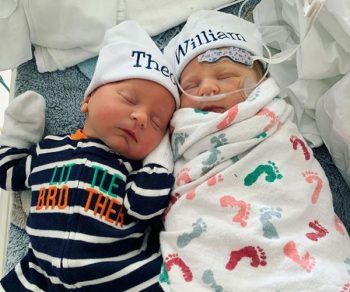
What helped you get through the last year?
“We’ve always practiced gratitude, not realizing how much we were going to need it. To be able to appreciate the happy moments between surgeries or treatments, to be able to be really present in those moments was key for me.” — Samantha Hatch, mom of William and Penny
The twins’ first days of life were very different, Samantha Hatch said. While Theodore (left) spent his time snuggling and nursing, William was getting his first electrocardiogram.
When he was one week old, William had his first open-heart surgery, performed by Dr. Muhammad A Khalid Nuri, a cardiac surgeon at Seattle Children’s and Chief of the Regional Cardiac Surgery Program at Mary Bridge MultiCare.
“Saying goodbye to one of the loves of my life before his first surgery was one of the hardest things I’ve ever had to do,” Samantha Hatch said, “But once the surgery was done, our fear turned into excitement knowing that our sweet baby William was one step closer to a livable life.”
“The hardest part of going through this during the pandemic was the limited visitation. We were going through this really traumatizing experience in isolation. People only knew what we told them or shared in pictures, but they weren’t in the room. They didn’t hear the medical equipment or see the other children. We couldn’t even connect with other parents in the family rooms or take a break at Starbucks.
“That’s when we leaned on the nurses and clinical staff. We’re so thankful for them. Not only were they helping save our children, they stepped up and became our family and friends when no one else could be with us.” — Samantha and Kyle Hatch, parents of William and Penny
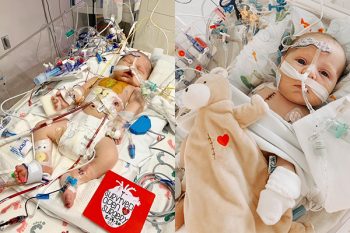 William had a difficult recovery after the surgery and stayed in the CICU longer than expected.
William had a difficult recovery after the surgery and stayed in the CICU longer than expected.
“It took 10 days — 10 long and scary days — before they could close his incision,” Samantha Hatch said. “His swelling was so bad; they were afraid if they closed it there wouldn’t be enough room for his heart to beat and it would cause cardiac arrest. Even though there was a thin membrane over his surgery site, he was still at a higher risk of infection and wasn’t able to graduate from the CICU until his incision was closed.”
After 67 days at Seattle Children’s, Samantha and Kyle Hatch were able to bring William home to meet his big brother and sister, Ben and Penny. The siblings hadn’t been able to visit William in the hospital due to COVID-19 restrictions.
“I don’t know a better representation of love than when Penny realized there were two babies!” Samantha Hatch said. “She loved sitting next to them with her hands on both of their bellies.”
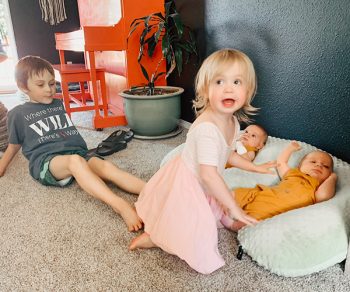
Unfortunately, after just one night at home, William began having trouble breathing. He was admitted to Seattle Children’s Emergency Department (ED) and stayed in the hospital for three more months.
Shortly after William was readmitted to Seattle Children’s, while the family waited for his second open-heart surgery, Samantha and Kyle Hatch noticed Penny was walking funny. She often held up her right toe and walked on the outside edge of her foot (as seen in the left photo).
Their pediatrician referred Penny to Seattle Children’s Foot Deformity Clinic in Orthopedics. She was diagnosed with Cavus Foot, a deformity that’s typically caused by a tethered spine. They sent Penny to get an MRI scan to see how they could correct her spine, a simple procedure the team performs about once a week.
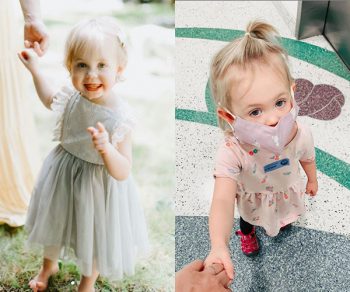
But Penny’s MRI revealed something unexpected — a mass the size of a strawberry at the base of her spine. Providers told Samantha Hatch her daughter likely had neuroblastoma, a solid-tumor cancer that develops from immature nerve cells. The survival rate is typically about 50%.
“It was every parent’s worst nightmare,” Samantha Hatch said. “I thought, ‘She is a happy, healthy girl showing no sign of illness, how could she possibly have cancer?’”
Kyle Hatch was taking care of their other children when Samantha Hatch got the MRI results. She vividly remembers calling him with the horrible news.
“He lost it,” she said. “He collapsed and cried, ‘I can’t lose her.’”

